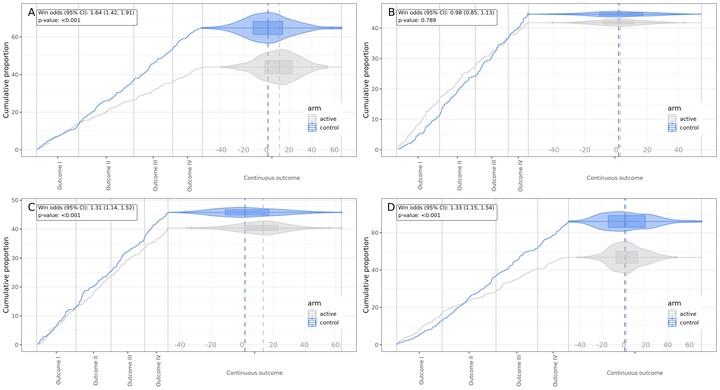The maraca plot: A novel visualization of hierarchical composite endpoints
 Image credit: The Society for Clinical Trials
Image credit: The Society for Clinical Trials
Abstract
Background: Hierarchical composite endpoints are complex endpoints combining outcomes of different types and different clinical importance into an ordinal outcome that prioritizes the clinically most important (e.g. most severe) event of a patient. Hierarchical composite endpoint can be analysed with the win odds, an adaptation of win ratio to include ties. One of the difficulties in interpreting hierarchical composite endpoint is the lack of proper tools for visualizing the treatment effect captured by hierarchical composite endpoint, given the complex nature of the endpoint which combines events of different types. Methods: Hierarchical composite endpoints usually combine time-to-event outcomes and continuous outcomes into a composite; hence, it is important to capture not only the shift from more severe categories to less severe categories in the active group in comparison to the control group (as in any ordinal endpoint), but also changes occurring within each category. We introduce the novel maraca plot which combines violin plots (with nested box plots) to visualize the density of the distribution of the continuous outcome and Kaplan–Meier plots for time-to-event outcomes into a comprehensive visualization. Conclusion: The novel maraca plot is suggested for visualization of hierarchical composite endpoints consisting of several time-to-event outcomes and a continuous outcome. It has a very simple structure and therefore easily communicates both the overall treatment effect and the effect on individual components.
- The maraca plot: A novel visualization of hierarchical composite endpoints was published in Clinical Trials.